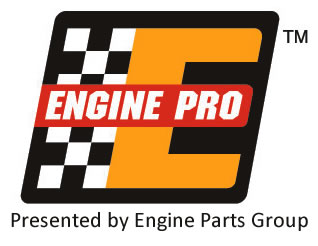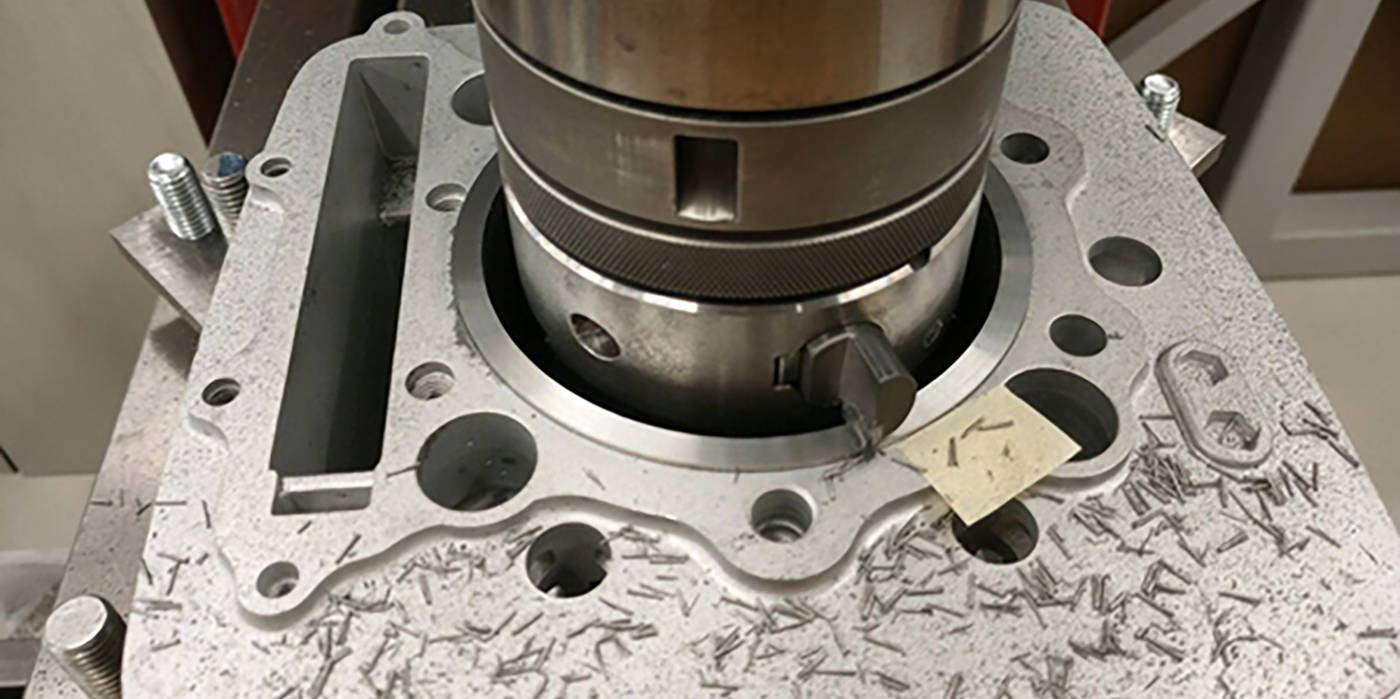 Plastic Fantastic
Plastic Fantastic
For many years, bolt boots have been the primary way to protect the crankshaft journal from damage during piston installation. Some shop supply companies sell long steel tubes that serve as guides to help align the rod to the journal. These help align the rod, but can also damage the journal surface. For many years we have used a low cost alternative that both protects the journal surface and aligns the rod to the journal.
We use hard plastic tubing that is cut in lengths of 6”-12”. Simply slide one end over the bolt and this not only keeps the bolt from contacting the journal, but it also serves as a guide to line up the rod. We use various lengths for different motors depending on deck height. A little experimenting will help you quickly determine which lengths work best for each motor.
The tubing is available at most home improvement stores. The cost is minimal and most stores will sell it to you by the foot, so there is no need to buy a complete roll. 3/8” tubing will work on 3/8 bolts. We even have bolts already inserted in tubing for the rods that use cap screws. Give it a try and we think you’ll agree with us that this is a great way to install pistons.
Chuck Verde, Casey’s Machine – West Valley, UT
Use Spare Time Wisely
Everyone once in awhile gets a slow day or two. You may notice that your guys want to slow the pace as well and laze around, but you have to keep them moving! Many things can be done on slow days. Clean the shop, organize inventory, build for stock and maintain equipment. If you don’t do it on slow days, you will be forced to do it when you don’t have time, which costs you money. Machines don’t wait for a slow day to need maintenance. Be proactive!
Jeffrey Myers, MAR Automotive, Inc. – Philadelphia, PA.
Camshaft Bearing Fundamentals
Camshaft bearings are more or less taken for granted. We knock out the worn pieces, press in a new set and assume everything will end up the same as it originally was. This is intended to explain why this assumption is not necessarily true and why we should not just take cam bearings for granted.
All but a very few cam bearings are bi-metal in construction and nearly all engines originally have their camshaft bearings installed in the unfinished condition and machined to size in the block as part of the block manufacturing process. This practice allows cam bearing ID’s to be closely controlled for size, shape and alignment. In the rebuilding process we remove these “Finished-In-Place” (FIP) bearings and replace them with parts which have been “precision” machined outside the engine.
Replacing FIP with precision cam bearings introduces a number of variables not present in the original engine assembly. Originally, the clearance between the shaft and bearings was a direct result of the difference between the ID size the bearing was machined to and the shaft OD. When a precision part is installed its final ID size is determined by a combination of the manufactured ID size, the bearing’s wall thickness and the diameter and shape of the housing it is installed in to. These variables introduce a set of conditions we have little control over.
If metal is shaved off the bearing OD during installation and builds up between the bearing and housing bore, the bearing will distort inward. If the block varies from spec due to distortion from overheating or the installation and removal of heads and manifolds, these variations will be reflected in the new cam bearings ID size and shape and ultimately in the bearing clearance and alignment.
The same causes of distortion in main bores are likely to produce similar effects in the cam bearing bores. This explains why, after installing new cam bearings, we sometimes encounter problems installing the camshaft. Casual engine builders are often confused by the fact that the cam turned freely in the old bearings and refuses to turn in the newly installed bearings.
First, remember that block distortion occurs gradually over a period of time, giving the camshaft the opportunity to wear the old bearings to match the distortion. Another factor is the relative skill or lack of skill exhibited by the installer of the replacement bearings. Nicks and dings will prevent the cam from turning.
Before undertaking a rebuild, check the cam bearing housing bores for size and shape. Bores that are undersize, oversize, or out-of-round are likely to cause problems. Some engines are built with oversize OD cam bearings as a result of a salvage operation to correct bores originally machined out of spec.
Replacement parts for these blocks are frequently difficult, if not impossible, to obtain. Check main bearing housing bore size, shape and alignment.
If the main bores are out of alignment or shape, it is likely the cam bearings are also. Nobody wants to scrap a block just because the cam bores are out of alignment, but after having made the above checks you will at least know what to expect and understand that the problem is not the fault of the new cam bearings.
A tight fit can be corrected by reaming or hand scraping the bearing surface. Honing is not recommended because grit from the hone stone will become embedded in the bearing surface. A homemade reamer can be made using an old camshaft if the journals are still within spec. Cut a groove diagonally across each journal about 1/8” deep.
Then, relieve the journal surface on one side of the groove, leaving the other side sharp. This produces a single flute reamer that can be turned with the aid of an old cam sprocket to remove bearing metal from the high or tight spots.
This procedure works pretty well with babbitt-lined cam bearings. The stronger (and harder) copper-lead and aluminum-based bearing metals are somewhat harder to cut. These materials are used in late model automotive and most heavy-duty engines for their greater strength and temperature resistance. As cam loads and engine operating temperatures have increased, babbitt has had to be replaced in favor of these stronger materials for better durability.
Loose fits are a tougher problem to deal with. Where housing bores are oversized, they can be sleeved or cam bearing OD’s built up with nickel to produce a tighter fit. These practices are generally employed when the block cannot be replaced.
– Engine Pro Technical Committee with thanks to Mahle Aftermarket Inc.













